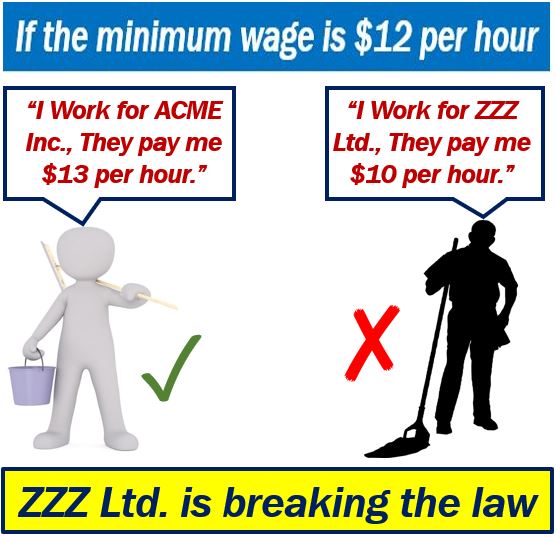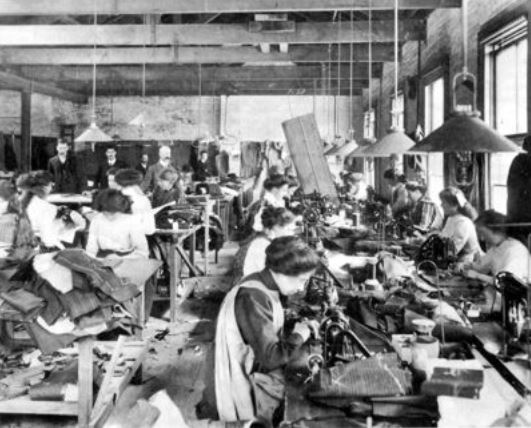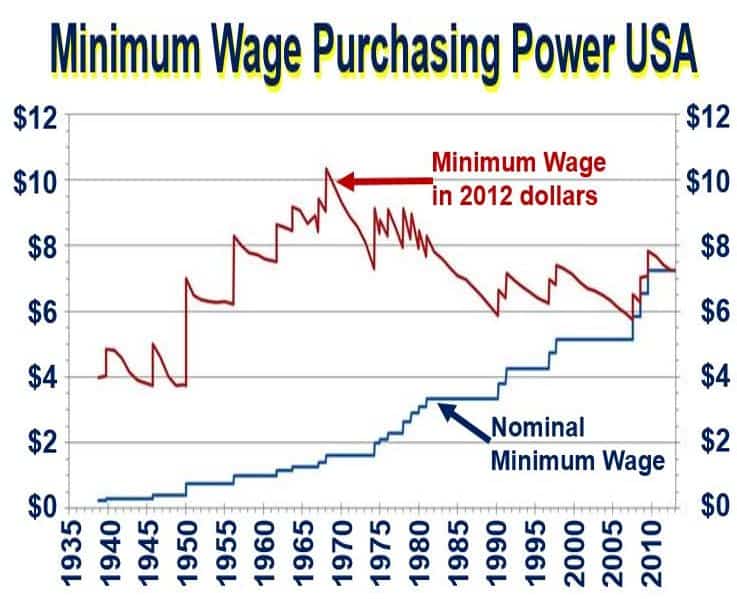What is the minimum wage? Definition and meaning
The Minimum Wage is the least an employer is allowed to pay an employee per hour – it is against the law to pay less. Employees must receive this minimum level of pay.
In some countries, trainees and workers under the age of 18 may have a lower minimum hourly pay rate than their older counterparts. This tiered structure aims to encourage employers to hire younger, inexperienced workers by reducing the wage burden.
By definition ‘minimum wage’ means workers can be paid more than the minimum wage, but never less. In the UK, there is a ‘name and shame’ system organized by the Government, which lists employers that pay their workers less than the legal minimum.
 The minimum wage is typically higher in the advanced economies compared to the emerging nations.
The minimum wage is typically higher in the advanced economies compared to the emerging nations.
Since July 2009, the minimum hourly wage rate in the USA has been $7.25, while in the UK it is £6.70 and £7.20 for a worker aged 21-to-24 and 25+ respectively, and £5.30 for one aged 18-20.
Many US states also have their own minimum hourly wage laws. In cases where a worker is subject to both the state and federal minimum wage laws, he or she is entitled to the higher of the two.
Twenty-nine of the fifty states in America have minimum hourly wage rates that exceed the federal rates, led by Massachusetts and California at $10 per hour.
According to the United States Department of Labour:
“Various minimum wage exceptions apply under specific circumstances to workers with disabilities, full-time students, youth under age 20 in their first 90 consecutive calendar days of employment, tipped employees and student-learners.”
The economic effects of a minimum wage
Let’s look at California and Massachusetts’ $10 minimum hourly wage. Having a minimum amount employers can pay their worker is affordable if the employee’s marginal productivity is greater than $10 per hour.

However, for those whose marginal productivity is less than ten dollars per hour, a minimum wage set at $10 creates an instant shortage of profitable manpower.
If a worker’s marginal productivity is $8 per hour, the only way the employers can take on workers is at a loss.
-
Unemployment
Many economists argue that the minimum wage fuels unemployment for this very reason – many jobs that would have existed had there been no minimum currently don’t, so there are more people out of work.
-
Keynesian economists
Supporters of Keynesian Economics disagree. They say that aggregate demand created by having a minimum wage boosts the economy, keeps consumer demand healthy, which in turn fuels growth in jobs.
There are many other arguments that support the minimum wage: 1. Better off employees get ill less often – if workers have a living wage they are less likely to miss work because of illness, which is better for the economy. 2. A minimum hourly rate of pay keeps extreme poverty levels down, which means there is less crime. Extremely poor people are more likely to break the law to survive.

Whether these perceived benefits are felt on a national scale we will never know for certain. There are no large-scale studies on this. The only way we could be sure would be to split a country down the middle – one half has and the other does not have a minimum wage – and monitor the two halves over a ten or twenty year period.
-
GDP and the employment market
The evidence we do have suggests that minimum wages, or small minimum wage increases actually improve the employment market and boost GDP (gross domestic product). Voters in Florida approved a hike in 2004. A follow-up comprehensive study found that employment subsequently increased and the economy got stronger
Some economists have suggested that introducing or raising minimum wages reduces on-the-job training, because that money is used up paying salaries. An empirical study carried out in 2001 found there was no evidence that minimum wages reduced training – in fact, its findings showed that training actually increased slightly.
It all started with a ‘maximum’ wage
Did you know there was once a maximum wage? In 1349, King Edward III set a maximum wage for laborers in medieval England. He was a wealthy landowner, who along with his Lords, was dependent on serfs to work the land.
-
Bubonic Plague
The Bubonic Plague (Black Death) reached England in the autumn of 1348 and decimated the population. Consequently, there was a severe shortage of farm laborers, which caused wages to soar. King Edward III set a wage ceiling.
The Justice of the Peace was charged with setting the maximum wage. Eventually, he started setting formal minimum wages. In 1604, King James I signed the Act Fixing a Minimum Wage for workers in the textile industry.
-
19th century
In the 19th century, Britain favored laissez-faire policies and disfavored both upper limit and lower limit wage regulations. During that century there was significant labor unrest in several industrial nations. Wage Unions, which had been illegal, were decriminalized and collective agreements became more popular.
New Zealand and Australia – in the 1890s – were the first countries to introduce legislation governing minimum wages. The movement initially focused on stopping worker exploitation in sweatshops.
Sweatshops employed huge numbers of women, young workers and children – paying them substandard wages. Minimum wage legislation was introduced as a means of paying sweatshop workers fairly. Eventually, the focus changed to helping workers, especially families, become more self-sufficient.
-
First national minimum wage
The New Zealand government enacted the first national minimum age law in 1894, followed in 1896 by Australia, and the UK in 1909. Statutory minimum wages were first introduced in the United States nationally in 1938.
Today, there is legislation or binding collective bargaining regarding minimum rates of pay in over ninety percent of all nations.
The term ‘wage’ on its own has a similar meaning to salary. However, wages are calculated by the hour, day, week or month, while salaries are calculated on a monthly or yearly basis. Traditionally, wages have been paid to blue collar workers while white collar workers (employees who work in offices), managers and directors have received salaries.
Furthermore, the distinction between wages and salaries reflects not just payment intervals but also the nature of employment relationships and expectations of work performance.
Two Videos
These two educational videos come from our sister channel on YouTube – Marketing Business Network. One explains what “The Minimum Wage” is, and the other explains what the word “Wage” means. Both videos use easy-to-understand vocabulary and examples.
-
What is the Minimum Wage?
-
What is a Wage?

